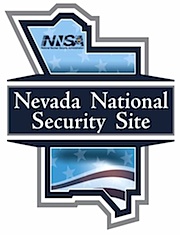 Description and Current Mission
Description and Current Mission
The Nevada National Security Site (N2S2), formerly known as the Nevada Test Site, is a critical facility within the U.S. Department of Energy's (DOE) nuclear weapons complex. Located 65 miles northwest of Las Vegas, Nevada, N2S2 spans approximately 1,350 square miles. Historically, this site was central to the United States' nuclear weapons testing program, conducting nearly 1,000 nuclear tests from 1951 until the U.S. moratorium on full-scale nuclear testing began in 1992. Since then, the site has shifted its focus to subcritical experiments and other nuclear-related activities, although its legacy of nuclear testing remains a significant concern.
As of FY 2025, the National Nuclear Security Administration (NNSA) continues to oversee operations at N2S2, which is managed by Mission Support and Test Services, LLC—a consortium that includes Northrop Grumman, Amentum, and Atkins. The site employs approximately 2,085 personnel, who are primarily engaged in weapons-related activities.
In the FY 2025 budget, the NNSA has allocated approximately $365 million for nuclear weapons activities at N2S2, reflecting an increase from previous years. This funding supports a range of operations, including subcritical nuclear experiments, the storage of special nuclear materials (SNM), and various high-hazard testing and experimentation activities.
Subcritical Experiments and Nuclear Testing
Although full-scale nuclear testing ceased in 1992, N2S2 remains a key site for subcritical experiments—tests that involve nuclear materials but do not result in a self-sustaining nuclear chain reaction. These experiments are intended to gather data on the behavior of nuclear materials under extreme conditions. Subcritical tests, while not violating the Comprehensive Nuclear-Test-Ban Treaty (CTBT), undermine global nonproliferation efforts by perpetuating the development and maintenance of nuclear weapons (LLNL Science & Technology Review).
Special Nuclear Materials and Environmental Concerns
N2S2 also serves as a storage site for Category I/II quantities of special nuclear materials (SNM), including plutonium and highly enriched uranium, which are remnants from previous weapons programs. The storage and management of these materials at N2S2 raise significant safety and environmental concerns, particularly given the site's history of contamination and its classification as a "Superfund" site by the Environmental Protection Agency (EPA).
The site also handles the disposal of low-level radioactive waste from across the nuclear weapons complex. The environmental legacy of N2S2 is a source of ongoing concern, with critics arguing that the continued storage and testing activities only exacerbate the site's long-term contamination issues (LLNL).
2023 Performance Evaluation Report:
Major NNSA Facilities at N2S2
- U1a Complex: This underground facility is primarily used for subcritical experiments. The complex consists of tunnels located deep beneath the surface, where nuclear materials are subjected to high pressures and temperatures. These experiments are critical for gathering data to support the Stockpile Stewardship Program, yet they also raise concerns about the ongoing reliance on nuclear weapons.
- Joint Actinide Shock Physics Experimental Research (JASPER): A gas gun facility used to study the properties of plutonium and other actinide materials under extreme conditions. The data collected here is used to refine the predictive models of nuclear weapons performance, which are critical for the maintenance of the nuclear stockpile without live testing.
- Big Explosives Experimental Facility (BEEF): The largest explosives testing facility at N2S2, capable of handling detonations of up to 70,000 pounds of TNT. BEEF is used for a variety of experiments, including hydrodynamic tests and the development of technologies to disable or render safe nuclear devices. The facility's activities, however, contribute to concerns about the environmental impact of ongoing explosives testing .
- Device Assembly Facility (DAF): Originally intended for assembling nuclear devices for testing, the DAF now serves multiple roles, including the storage of SNM and the fabrication of components for subcritical experiments. Despite its state-of-the-art security features, the facility has faced criticism for lacking a clearly defined mission in the post-testing era.
Future Challenges and Controversies
Looking forward, the NNSA's plans for N2S2 include enhancing its capabilities as a "Center of Excellence for High-Hazard Testing and Experimentation," as outlined in the Complex Transformation plan. This includes the relocation of additional test facilities and SNM from other sites within the nuclear weapons complex to N2S2.
Critics argue that these expansions only reinforce the U.S. commitment to maintaining a robust nuclear arsenal at a time when international pressure for disarmament is increasing. Additionally, the environmental and safety concerns associated with the continued operation and expansion of N2S2 remain unresolved, raising questions about the long-term sustainability of these activities in light of global nuclear nonproliferation goals .
Source: Transforming the U.S. Strategic Posture and Weapons Complex For Transition to a Nuclear Weapons-Free World, Nuclear Weapons Complex Consolidation Policy Network, April 2009.
The members of the Nuclear Weapons Complex Consolidation Policy Network include Nuclear Watch New Mexico along with national organizations: the Natural Resources Defense Council and the Project On Government Oversight; Tri-Valley CAREs, near the Lawrence Livermore National Lab; the Greater Kansas City Chapter of Physicians for Social Responsibility, near the Kansas City Plant; and JustPeace of Texas, near the Pantex Plant.
Building the Atom Bomb- The Full Story of the Nevada Test Site
From 1951, over four decades, the US government carried out almost a thousand nuclear tests at this test site, earning it the nickname of the "most bombed place on Earth". The Guardian has done an excellent interactive documentary of the Nevada Test Site- precursor to the Nevada National Security Site- with a series of video segments composed of archival footage. See the interactive presentation.
